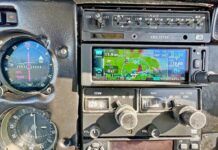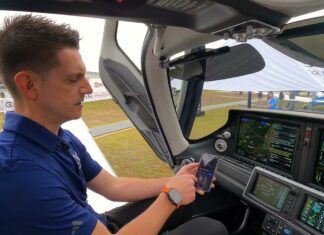Last year around this time, Garmin sounded the warning horn that it won’t be able to keep fully supporting the GNS 430—perhaps the most popular avionics unit of all time. Other than the King KX155 navcomm radio, I can’t think of any other unit that’s more familiar. With over 100,000 GNS units sold, it’s easy to understand the hysteria that Garmin’s announcement created. A recent update from Garmin explained that it’s the eight-color, 1990s-vintage display on the GNS 430 that’s extinct, and since it sourced the display from an outside vendor, there’s no new drop-in replacement screen. No matter how you feel about Garmin and its inability to come up with a replacement display (it said a redesign for retrofitting existing GNS units with newer displays isn’t worth the certification costs given the memory-tapped platform), it’s tough to argue that core Garmin products don’t have long production runs.
The G1000 series is one example, hitting OEM panels in the early 2000s and still a standard today as the G1000 NXi. The GTN-series touchscreen navigators replaced the GNS line in 2011 and they’re still in production as the GTN Xi series. So hearing those speculate that the company builds obsolescence into its products so owners are forced to upgrade got me thinking about Garmin’s early panel-mounted avionics that met their demise when, like the GNS 430, Garmin couldn’t source replacement displays for them. Looking at the consumer electronics market, where most video screens are outsourced from the Far East, I’d estimate that 10 years might be the expected support lifespan for a display. For sure, the upgraded feature sets long outlived that old eight-color LCD in the GNS units. Technology hasn’t been stagnant—let’s hit the rewind button.
When I was an enthusiastic green avionics guy in the early 1990s, I watched the upgrade craze switch from Loran-C to GPS and remember installing an early production unit of Garmin’s first navigator—the GPS 100—in a Cherokee. Displays were pretty stark back then, but compared to the King KX170Bs that shared the radio stack with the stark GPS 100, it was eye-catching. From there, display tech incrementally progressed. But upkeep wasn’t easy and display repairs were always an issue, eventually. Some have suggested that Garmin should have planned a longer support timeline for the GNS units because they were an OEM standard. Still, I recall the seven-segment displays used in digital ARC radios—an OEM standard in Cessna singles and twins—eventually becoming impossible to source somewhere around the early 2000s. Since they were around from late 1980s, avionics shops easily supported them for around 20 years before the tech just got better. Many of these RT385/485 navcomms were replaced by GNS 430s, of course, but some are still in service today. I don’t know how many Cessnas rolled off the assembly line with these digital ARC radios, but there were a lot, and I really don’t remember owners hammering on ARC for support issues.
I think it’s been a good run for GNS support. When Garmin added a factory WAAS upgrade in 2003 as it promised, it offered the update for 17 years before dropping it when the ADS-B mandate hit in 2020. At the time, when asked why it was dropping the upgrade, Garmin told me it planned to source enough parts to support WAAS upgrades until the FAA’s mandate hit. Eventually, WAAS demand fell off, likely because so many GNS units were already upgraded.
When I described the GNS dilemma to a neighbor who works in the electronics logistics trade, he told me he didn’t know of any worthy sources for low-resolution eight-color displays like the one used in the GNS products—a niche market. And, yeah, he asked the cliche about how many 25-year-old phones, televisions and computer monitors I use on a daily basis. I countered that these old consumables didn’t cost $10K-plus like a 430 did. That stings. The good news is that display failures are rare—Garmin estimates that roughly 1 percent will be affected in the short term. The bad news is that low demand means there won’t be anyone willing to tool up for profit. I wouldn’t.





